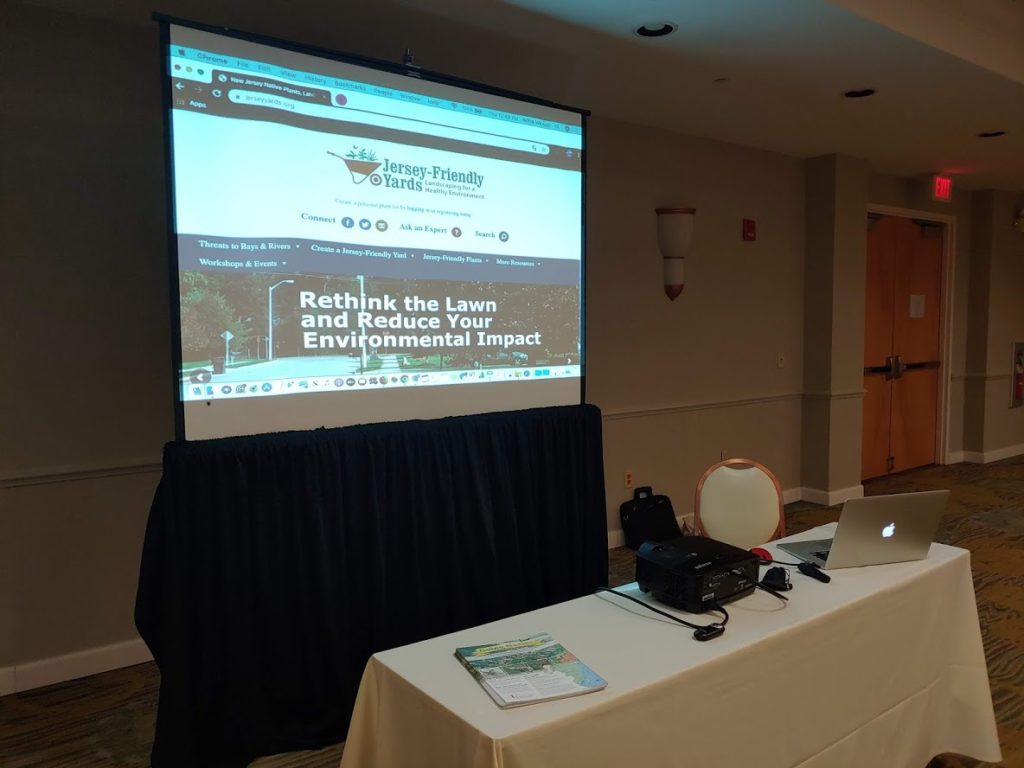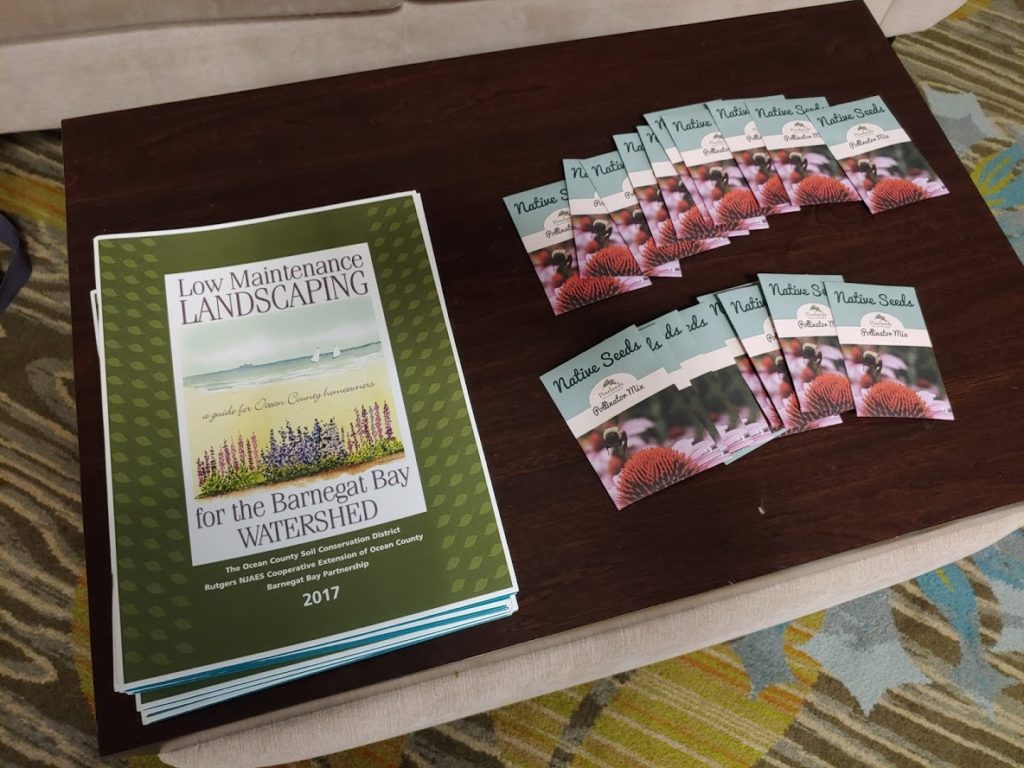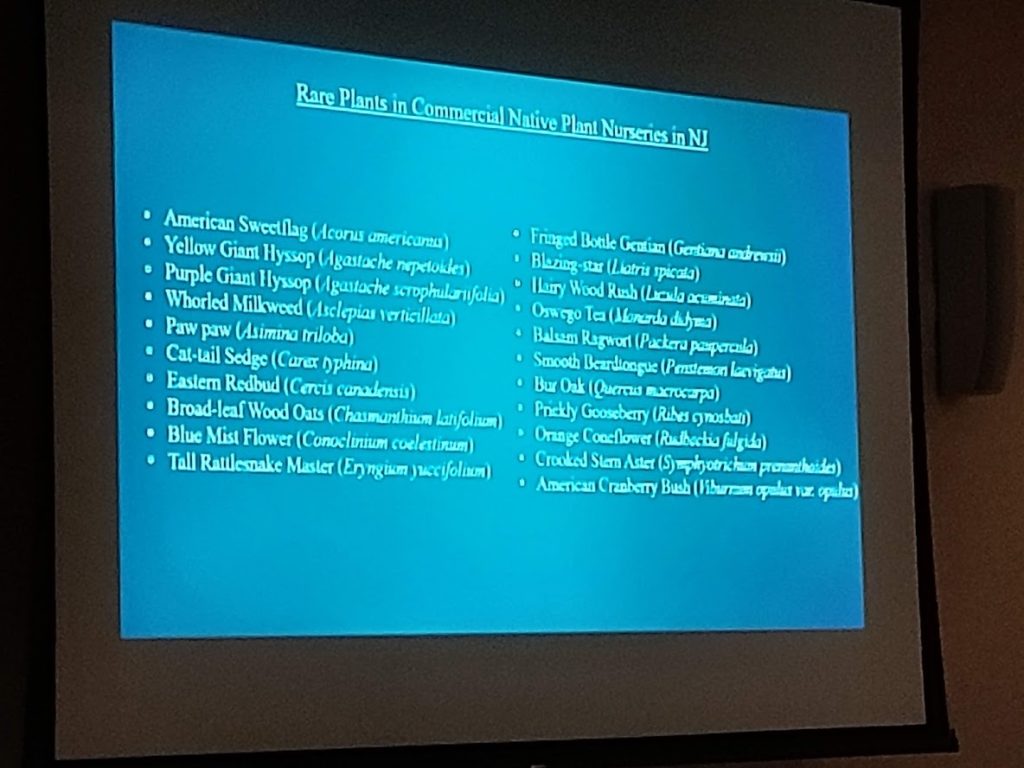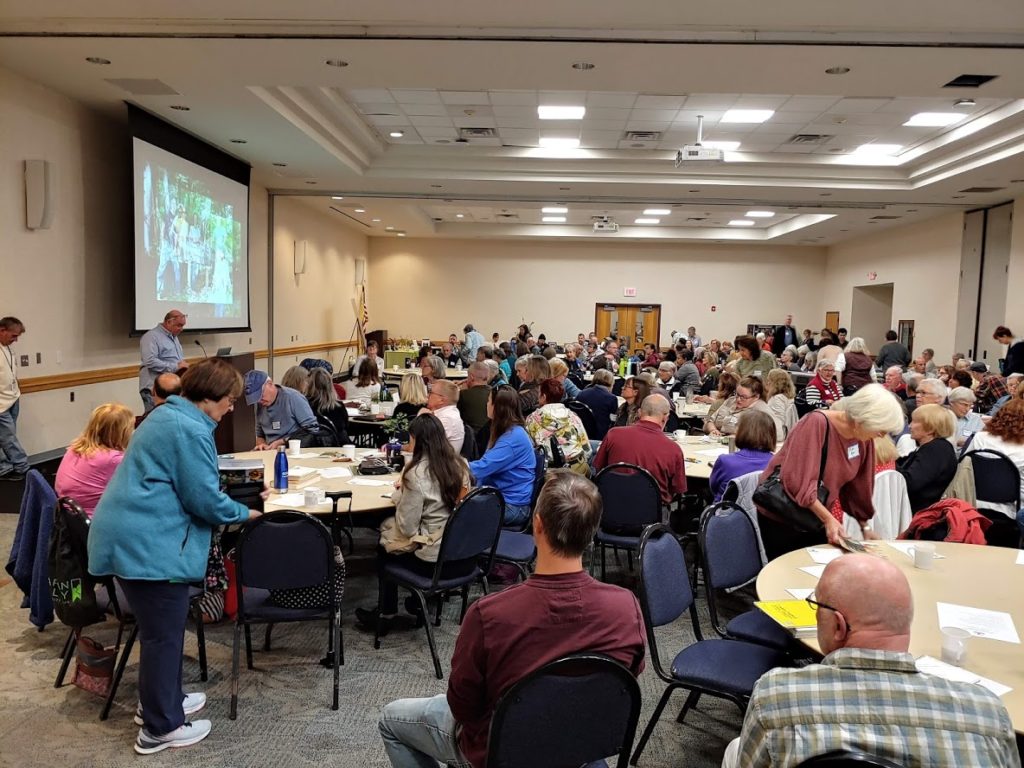In an unprecedented development, I’ve attended 3 different conferences in one week here in New Jersey. The 3rd Annual Jersey Friendly Yards Conference was last Saturday. This full day event took place at Ocean County College in Toms River, NJ and extended from 9:30am until about 4pm. The conference is organized by the Ocean County Soil Conservation District and the Barnegat Bay Partnership. The conference sold out this year, so the organizers are happily considering moving to a larger venue and expanding the presentation to appeal to a larger NJ audience outside of the Ocean and Monmouth County area.
[su_row][su_column size=”1/2″ center=”no” class=””]
Patt Sutton and Bruce Crawford addressed the entire group at the beginning and end of the schedule, but after lunch, in the middle of the day, participants broke off into smaller classrooms to experience more specialized sessions of their choice. I decided on the Food Forest workshop, delivered by Jeanine Cava from Soil to Soul Farm based in Tuckerton, NJ.
In the time she had with us, she introduced so many important concepts like Permaculture, food forestry, native and other appropriate specimens and how to integrate them into guilds in your home landscape. Biochar was discussed as well as the ability to sequester carbon to combat climate change in our home gardens. I enjoyed her presentation and look forward to networking with her as a fellow local permaculture enthusiast and food forest grower in the near future.
[/su_column]
[su_column size=”1/2″ center=”no” class=””]

[/su_column][/su_row]
Pineland’s Nursery was there with plenty of product, selling native plants to the conference attendees. They had a great selection and I left with 2 cardinal flowers that I planted in the yard as soon as I got home. The website for Pineland’s says they are generally a wholesale supplier, though they do have a couple of open house events during the year where they sell to the general public.
[su_row]
[su_column size=”1/2″ center=”no” class=””]
[/su_column]
[su_column size=”1/2″ center=”no” class=””]
On Thursday, October 24th I had the honor of representing my Jersey Friendly Yard at day 3 of the Charting a Course for the Barnegat Bay event. I tried to cram way too much into my presentation and I didn’t sync my notes exactly to my pictures, so a lot of it is off the cuff – but I’ll get better, the more I present.
What do I wish I had time to say? Where I get most of the plants I put in my yard… Online nurseries, seed catalogs, ebay and etsy. How do I start? Start small and close to the entrances to your home. This way you are setting yourself up for success and will be more likely to care for young plants because you will SEE and walk by them every day. And start a compost pile right away! This fall! A pile takes time to break down, even if you are doing everything right. The sooner you start, the sooner you’ll get compost.
[/su_column]
[/su_row]
[su_row]
[su_column size=”2/5″ center=”no” class=””]

[/su_column]
[su_column size=”1/5″ center=”no” class=””]

[/su_column]
[su_column size=”2/5″ center=”no” class=””]

[/su_column]
[/su_row]
Then on Saturday, October 26, 2019 I went with friends to the Native Plant Society of New Jersey Annual Conference. This was a full day of lectures, lunch, a seed swap and a native plant sale. I volunteered to help represent the Jersey Friendly Yards effort at the event.
[su_row][su_column size=”1/2″ center=”no” class=””]

[/su_column]
[su_column size=”1/2″ center=”no” class=””]
Notably, the “Rare and Endangered Plants of New Jersey” presentation by Jason Hafstad created quite a stir when we realized he advocated for nurseries to refrain from selling and distributing rare and endangered native plants to be planted in home gardens and restored to wild spaces. He does suggest planting natives that are NOT rare – however rare and endangered plants tend to be specialists and can often only survive in a very special environment and ecological niche.
The issue is less about saving a specific plant than it is saving the specialized environment in which that plant occurs naturally. Other points were raised as well, but this was my take away for the argument, which now has me thinking twice about future decisions in my own yard and the native plant gardens I maintain at Jake’s Branch County Park.
[/su_column][/su_row]
This conference sold out this year as well, which is so thrilling! That means native plants and working in our own yards to restore soils and support local wildlife is becoming more of a priority for the public. Hope! Encouragement! Keep it up!
I enjoyed the full day of speakers and picked up a purple flowering raspberry and wild geranium at the native plant sale. I also brought seeds for the seed swap (mountain mint, horse mint and blazing star liatris) and collected a few new seeds to try to propagate this winter.
Back in the garden this week and winter prep is happening largely without my involvement! The paw paw leaves are turning yellow and starting to fall. I can see the mantis nests peeking through as branches begin to be more exposed and the once dense shrubs drop their foliage. I haven’t had to mow the lawn in a couple of weeks and I won’t rush it, though I do plan to mulch/bag the leaves with the mower before I add them to the compost pile this year. I want to see how quickly it will speed up the compost process.
I have a LOT of wood chips left to move since I had a tree service bring me a load… oh, at least a month ago. Between here and the park, I’ll go through all of them before a heavy frost.
I made a fatal mistake with my BioCharlie! I left it out in the rain after I made my last batch and the thing has rusted shut. Ugh. I replaced it and am looking forward to trying again. The oaks have dropped a zillion acorns this year and I plan to try to make a batch of acorn biochar this week. I hope it’s the perfect stock material because I have a LOT of them and I have to get them off the yard because the dog is tip toeing around back there… ouch ouch ouch. They seem to hurt her feet. Will the acorns explode in the kiln? I hope not.


